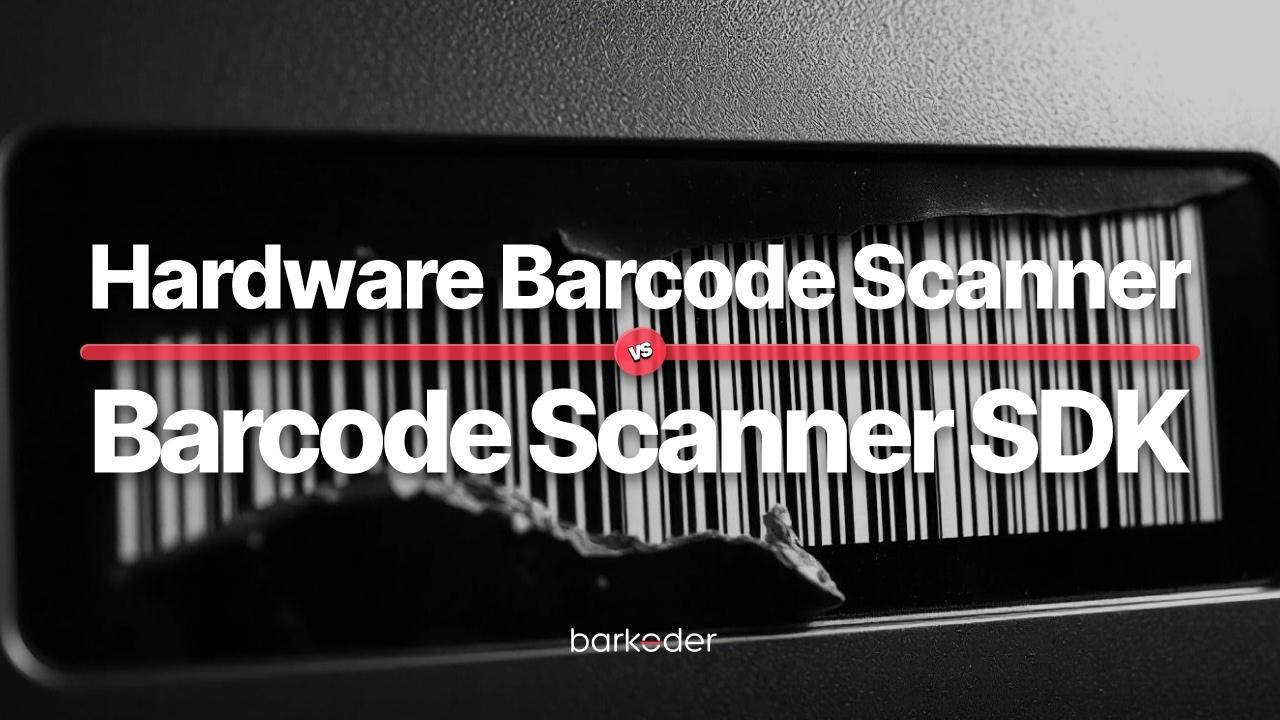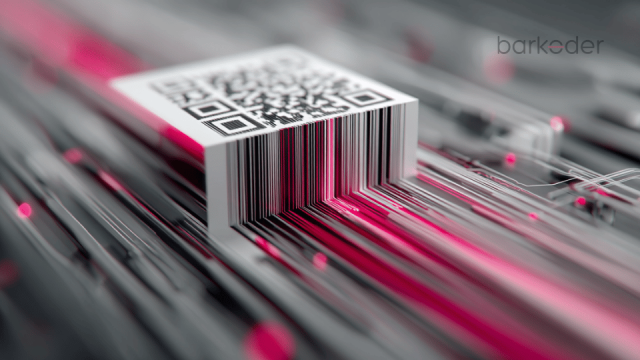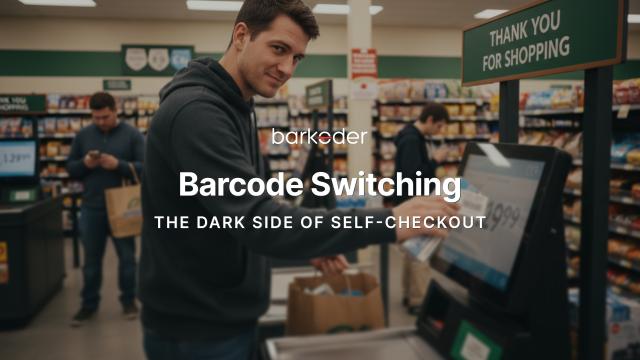
Barcode scanning software SDKs vs hardware barcode scanners
Choosing between barcode scanning software SDKs and hardware barcode scanners depends on factors like cost, speed, accuracy, environment, and integration needs. Below is a detailed comparison to help you decide which is best for your use case.
Here’s a comparison to help you decide:
1. Barcode Scanning Software SDK
A Barcode Scanning Software SDK (Software Development Kit) allows developers to integrate barcode scanning functionality into mobile apps, web applications, or desktop software using a device’s camera.
(e.g., barKoder, Scandit, Dynamsoft, Zebra SDK, Google ML Kit, etc.)
What it is: Software that turns a smartphone, tablet, or PC camera into a barcode scanner using an SDK.
Best for: Businesses that want to integrate barcode scanning into existing devices without additional hardware.
Pros:
- Cost-effective (no need for extra hardware)
- Easily integrated into mobile apps or web apps
- Supports multiple barcode formats
- Works on existing consumer devices (smartphones, tablets)
- AI-based enhancements improve scanning in poor conditions
Cons:
- Requires a high-quality camera for best performance
- Slower than dedicated hardware scanners in high-volume scanning
- Battery consumption can be high on mobile devices
- May struggle with damaged or low-contrast barcodes
Here are some of the best barcode scanning SDKs available:
| SDK | Platforms | Features | Best For |
|---|---|---|---|
| barKoder | iOS, Android, Web | BarKoder's high-performance mobile and web software for barcode and MRZ scanning. | Retail, logistics, healthcare, Automotive, Government and public sector |
| Dynamsoft Barcode Reader | Windows, Linux, iOS, Android, Web | High accuracy, document scanning integration | Industrial, government, document scanning |
| Zebra Barcode SDK | Android, iOS | Designed for Zebra devices, enterprise-grade | Retail, logistics, warehousing |
| Google ML Kit (Barcode Scanning API) | Android, iOS | Free, simple integration, offline support | Small business apps, low-volume scanning |
| Scandit | iOS, Android, Web | Fast AI-powered scanning, AR overlays, enterprise-grade | Retail, logistics, healthcare |
| Honeywell SwiftDecoder | iOS, Android | High-speed scanning, industrial use | Warehousing, medical, logistics |
2. Hardware Barcode Scanners
Hardware barcode scanners are dedicated devices designed for fast and accurate barcode scanning. They come in various types and are commonly used in retail, warehousing, logistics, healthcare, and industrial settings.
(e.g., Zebra, Honeywell, Datalogic, etc.)
What it is: Physical devices designed for barcode scanning, including handheld, fixed-mount, and embedded scanners.
Best for: Warehousing, retail, logistics, and industrial applications requiring fast, high-volume scanning.
Pros:
- Fast and accurate scanning, even in poor lighting
- Works well with damaged or low-quality barcodes
- Reliable for continuous use in high-volume environments
- Often built for rugged conditions (dust, water, drops)
- Wireless options with Bluetooth for mobility
Cons:
- Higher upfront cost
- Limited flexibility (dedicated to scanning only)
- May require additional integration with existing systems
Here are the main types of barcode scanners and their use cases:
| Scanner Type | Description | Best For |
|---|---|---|
| Handheld Barcode Scanners | Portable, point-and-shoot scanners (wired or wireless) | Retail, warehouse, inventory management |
| Fixed-Mount Barcode Scanners | Mounted scanners that automatically read barcodes as items pass by | Conveyor belts, manufacturing, kiosks |
| Presentation Barcode Scanners | Hands-free, omnidirectional scanners (used at checkout counters) | Retail, supermarkets, self-checkouts |
| Mobile Computers (PDA Scanners) | Combines a barcode scanner with a touchscreen computer (Android/iOS) | Field service, logistics, warehouse operations |
| Wearable Barcode Scanners | Hands-free scanners (wrist-worn, ring, or glove scanners) | High-speed warehouse picking, assembly lines |
| 2D Imagers | Reads both 1D & 2D barcodes, including QR codes | Retail, ticketing, healthcare |
| Long-Range Barcode Scanners | Reads barcodes from long distances (10-50 feet) | Warehouses, forklift scanning, large packages |
Here are some of the leading brands in barcode scanner technology:
| Brand | Popular Models | Best For |
|---|---|---|
| Zebra Technologies | DS2208, LI4278, TC52, MC9300 | Retail, warehouses, healthcare |
| Honeywell | Xenon 1950, Voyager 1250g, Granit 1981i | Industrial, rugged environments |
| Datalogic | Magellan 1500i, Gryphon GD4500 | Retail, POS, logistics |
| Symbol (Motorola) | LS2208, DS9208 (Now part of Zebra) | Retail, inventory |
| Opticon | OPN-2006, L-50X | Compact, lightweight scanning |
| Socket Mobile | DuraScan D740, S740 | Bluetooth mobile scanning |
| Newland | HR3280, FM3080 | Cost-effective scanning |
Which One Should You Choose?
- Use an SDK if you want to integrate scanning into mobile apps, have a lower budget, or need flexibility.
- Use hardware scanners if you need high-speed, high-accuracy scanning in demanding environments.
Head-to-Head Comparison: SDKs vs. Hardware Scanners
| Feature | Barcode Scanning SDK (Software) | Hardware Barcode Scanner |
|---|---|---|
| Cost | ✅ Lower (uses existing devices) | ❌ Higher (dedicated hardware) |
| Speed | ❌ Slower, depends on camera | ✅ Faster, instant scanning |
| Accuracy | ❌ Can struggle in low light/damaged barcodes | ✅ Highly accurate, even with poor quality barcodes |
| Mobility | ✅ Works on mobile devices | ✅ Wireless options available |
| Ease of Integration | ✅ Simple API integration | ❌ May require POS or WMS integration |
| Scalability | ✅ Deploy to any number of devices | ❌ Requires purchasing more hardware |
| Battery Life | ❌ Drains mobile battery | ✅ Long-lasting for full-shift use |
| Ruggedness | ❌ Depends on the phone/tablet durability | ✅ Industrial-grade options available |






